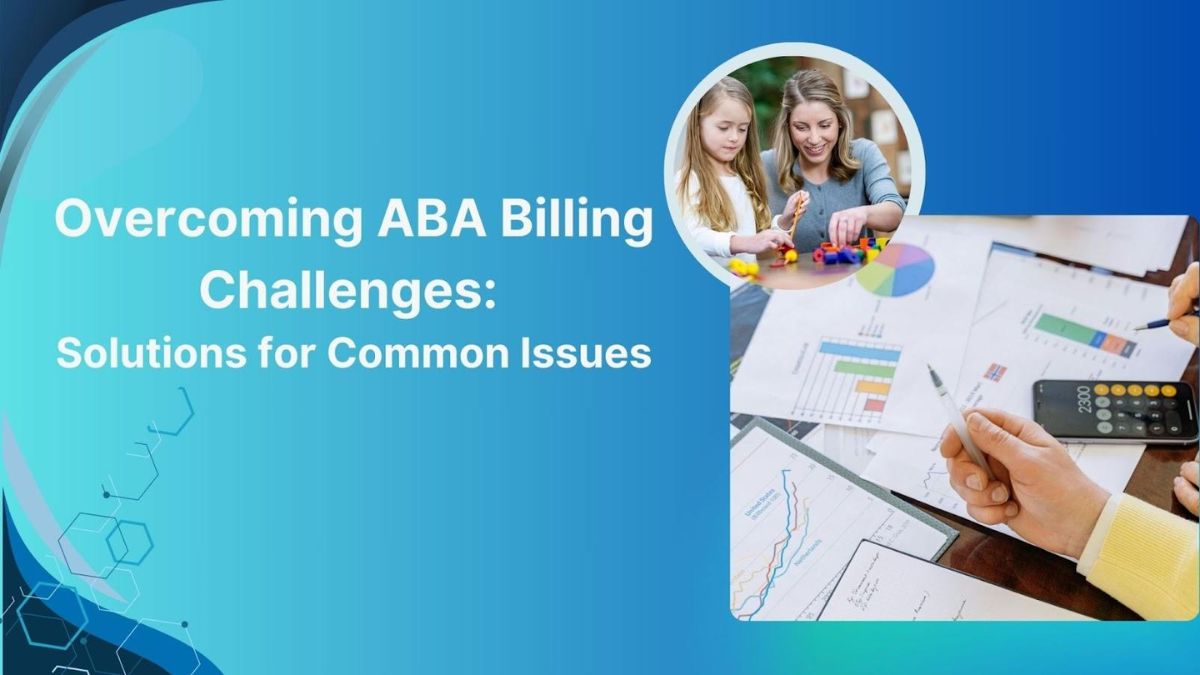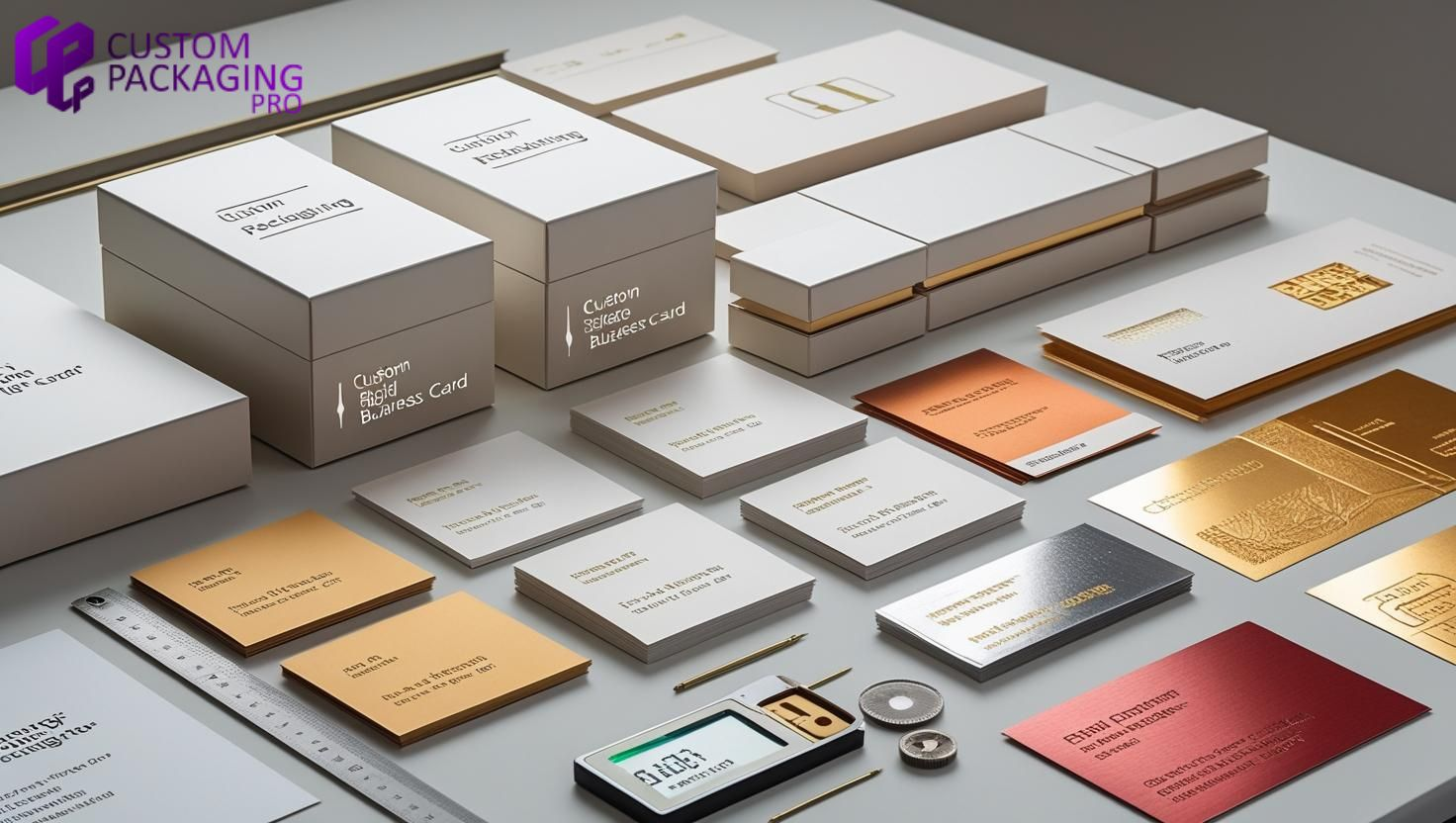BUSINESS
Overcoming ABA Billing Challenges: Solutions for Common Issues

Billing for ABA therapy is a specialized and intricate process that poses unique challenges. Compared to other medical fields, ABA therapy lacks standardized billing practices, and payer requirements can vary significantly, making the billing process complicated for providers. Additionally, ABA therapy billing involves long-term, individualized treatment plans, which require meticulous billing practices to ensure timely reimbursement and financial stability for the practice. In this article, we dive into the core issues of ABA billing and present practical solutions to overcome common challenges, helping practices streamline their billing processes and optimize revenue.
Important ABA Billing Challenges
Diverse Payer and State Requirements
The wide range of standards across payers and jurisdictions is a major challenge in ABA billing. Unlike other medical fields with consistent guidelines, ABA therapy lacks uniform billing criteria. This variation means documentation, coding, and credentialing requirements differ based on payer policies and state regulations. Providers must adjust their practices accordingly, increasing the complexity of the billing process and the likelihood of errors.
- State-by-State Laws: Individual states have different laws governing the invoicing and coverage of ABA services, which causes regulations to vary. For example, one state can have more relaxed requirements, while another would need comprehensive treatment plans for each authorization request.
- Private Insurance Standards: Providers must modify their paperwork and procedures by any special requirements that private insurers may have for billing procedures. Because various insurance companies may have different expectations for the same services, this discrepancy further complicates the billing process.
Difficulties in Pre-Authorization
ABA billing services are essential due to the long-term and ongoing nature of ABA therapy, with pre-authorization often required for most sessions. This process can be labor-intensive, as it necessitates the submission of detailed documentation, including progress reports and treatment plans, to demonstrate the medical necessity of ABA services. Ensuring that these documents are thorough and well-prepared is crucial for securing timely approvals and minimizing delays in treatment. This process can be labor-intensive, as it necessitates the submission of detailed documentation, including progress reports and treatment plans, to demonstrate the medical necessity of ABA services. Ensuring that these documents are thorough and well-prepared is crucial for securing timely approvals and minimizing delays in treatment.
Treatment Intensity and Frequency: The pre-authorization procedure becomes a persistent difficulty since the severity of symptoms and necessary therapies for Autism Spectrum Disorder (ASD) vary greatly. To ensure ongoing coverage, treatment plans need to be revised often, which can put a burden on administrative resources.
Session Note Requirements
ABA therapy sessions must usually be well documented for insurance payers, including comprehensive session notes that include the length of the session, specifics of the treatment, and the patient’s development. The ABA medical billing procedure may get much more complicated if these requirements are not met, since this may result in claim denials or delays.
- Particular Payer Conditions: Providers must modify their note-taking procedures to meet varying criteria since various payers have varied requirements for session documentation. For instance, whilst some insurers could accept a condensed report, others might want minute-by-minute details of the session.
Compliance and Credentialing
Another difficulty with ABA billing is making sure that all providers fulfill the required certification and compliance standards. Verifying a provider’s credentials and license is known as credentialing, and it might take a while. The procedure is further complicated by the possibility that payers have differing requirements for Board-Certified Behavior Analysts (BCBAs) and Registered Behavior Technicians (RBTs) accreditation.
Disparities at the Provider Level: Credentialing standards might differ depending on the type of service as well as the payer. For example, services given by a BCBA may need different billing than those offered by an RBT. To prevent claim denials due to provider qualifications, proper credentialing is essential.
Methods for Resolving ABA Billing Issues
It is essential to implement tactics that improve billing accuracy and expedite procedures to successfully negotiate the difficulties of ABA billing.
Make use of practice management software
ABA-therapy billing procedures are more efficient by investing in specialist practice management software. By automating repetitive processes like insurance eligibility checks, claim submissions, and payment posts, modern technologies lower the possibility of human mistakes.
Benefits of Automation: Automation saves time on laborious operations including developing payer-specific templates, tracking authorization limits, and patient information verification. Unauthorized claims can be avoided, for instance, by using ABA therapy billing software that alerts users when an account approaches its permitted session limitations.
Create Templates for Payer-Specific Documentation
Session notes may be made to regularly satisfy standards by creating templates that are customized to each payer’s documentation needs. Providers may keep accurate and comprehensive records by employing predefined categories for necessary information, such as session duration and treatment details. This preventative measure lessens the possibility that claims may be denied for lack of supporting paperwork.
Provide Regular Training to Billing Staff
To keep current with evolving payer criteria, billing codes, and documentation standards, staff workers need to get continual training. Regularly scheduled training sessions may help all team members stay up to date on the most recent rules and best practices. Since modifications to payer policies or CPT codes may have an immediate impact on payment, this information is particularly important for ABA billing.
Conduct internal audits
Finding any compliance issues and areas where billing procedures need to be improved can be aided by conducting regular internal audits. These audits should include a review of billing codes, session notes, and claim submissions to ensure compliance with payer and regulatory standards. It is easier to maintain a high claim acceptance rate when problems are identified before they worsen.
Promote Efficient Payer Communication
To promptly address billing issues, effective channels of communication with insurance payers must be established. Providers should often contact payer representatives to get clarifications on denied claims, updates on policy changes, and assistance with complex billing issues. Positive payer interactions may speed up problem-solving and improve overall billing accuracy.
Educate and Support Parents
Navigating the insurance process may be challenging for parents, especially if they want to receive their children’s ABA therapy. Giving them precise directions and educational resources might help ease some of their concerns. Practices must offer support to ensure parents understand their ABA insurance billing coverage, out-of-pocket costs, and the billing process. Connecting parents with local ABA support groups can also be a fantastic method to address questions and concerns that aren’t linked to bills.
Improving Billing Precision With Technology
ABA billing procedures may be revolutionized and many typical problems can be resolved more easily by utilizing cutting-edge technology. Technology can help the billing process in the following ways.
- Real-Time Analytics and Reporting: Modern billing software provides real-time insights into key metrics like claim acceptance, denial rates, and accounts receivable aging. These data-driven insights help practices optimize their revenue cycles.
- Automated Authorization Alerts: A billing tool for ABA therapy that tracks authorization units and sends notifications before limits are reached can prevent unauthorized services, reducing the risk of claim denials.
- Integration with Practice Management Systems: Automatically generating claims from recorded session data ensures that all necessary details, such as treatment plans and progress notes, are included, minimizing administrative errors.
Conclusion
ABA billing complexity arises from diverse payer restrictions, complex documentation standards, and differing credentialing criteria. By using practice management software, creating payer-specific templates, and providing regular training, providers can streamline billing and secure faster reimbursement. Leveraging technology for real-time reporting and maintaining open communication with payers also supports financial stability, allowing clinicians to focus on quality care for individuals with autism spectrum disorder.
BUSINESS
How Often Should You Visit the Dentist? Insurance-Friendly Tips

General Recommendations for Dental Visits
How often you need to visit the dentist isn’t always clear-cut. The long-standing rule was to see your dentist two times a year for checkups and professional cleanings. This twice-yearly schedule promotes early detection of dental concerns, such as tooth decay, gum disease, and oral cancer, making treatment easier and less invasive. By catching problems before they can worsen, you can often avoid more complex and expensive procedures.
For those with chronic conditions, such as diabetes, or a past incidence of cavities and gum disease, dental professionals often suggest more frequent check-ins, sometimes every three to six months. This shorter interval allows your dentist to closely monitor healing, disease progression, and the effectiveness of your home care routine. Many dental insurance policies, especially comprehensive options like Delta Dental PPO insurance in Florida, are designed to support regular preventive care, making it easier to stick to the right schedule without unexpected costs. If you’re unsure how often you should go, talk with your dentist about individual risk factors and how other health issues, such as pregnancy or medication use, may influence your needs.
Factors Influencing Visit Frequency
Your unique health profile determines how often dental appointments should be booked. Consider these influencing elements:
- Oral Health Status: Past or current dental problems, such as recurring tooth decay, enamel erosion, or gum disease, require closer monitoring. Some patients are more prone to cavities or periodontal disease due to genetic factors, medications, or underlying medical conditions.
- Overall Health: Illnesses like heart disease and autoimmune conditions may necessitate more frequent dental oversight. Evidence shows a strong connection between oral and systemic health; conditions like diabetes can influence gum health, so regular dental evaluations are essential.
- Lifestyle Choices: Smoking, high sugar intake, and poor oral hygiene increase the risk of issues and warrant more regular exams. If you suffer from dry mouth due to medications or treatment (like radiation therapy), you may also be at higher risk for oral health problems.
For those at low risk, which means you practice good oral hygiene, have no history of dental disease, and maintain a balanced diet, annual or twice-yearly visits may suffice. Always consult your dentist to determine an individualized care plan based on these factors, and don’t hesitate to ask about what schedule best fits your life and health status.
Maximizing Dental Insurance Benefits
Dentists urge patients to make the most of their dental insurance coverage, which can significantly impact treatment decisions and costs. Many often leave benefits unused, potentially missing out on essential preventive care that their plan covers. Here are effective ways to maximize your benefits:
- Stay In-Network: Choose a provider within your insurance’s network for lower co-pays, as insurers have pre-negotiated rates with participating dentists. Out-of-network care often means higher out-of-pocket costs, so consult your insurance portal to find a suitable dentist.
- Strategic Treatment Planning: If you need extensive dental work, consider spreading treatments over the end and beginning of two calendar years to take advantage of annual benefit resets. By doing this, you may be able to use two years’ worth of benefits to cover procedures, reducing your expenses.
- Utilize Tax-Advantaged Accounts: Flexible Spending Accounts (FSAs) and Health Savings Accounts (HSAs) can be used to pay for eligible dental expenses with pre-tax dollars; track deadlines to avoid losing unused funds. These accounts are especially valuable if your plan limits covered treatments or you need elective procedures.
Review your insurance benefits annually and discuss with your dentist to optimize preventive and necessary care. Many dentists will even help you navigate paperwork to ensure your treatment is as affordable as possible, so don’t hesitate to ask their office staff for guidance.
Preventive Care: A Cost-Effective Approach
Preventive dentistry is your best defense against high dental costs and health problems. Regular dental cleanings and examinations can help catch cavities, gum problems, and oral cancers before they progress. Early detection leads to simpler, less invasive, and less expensive treatments. Most dental plans cover these visits at 100%, making them the most cost-effective way to maintain oral health. Even if you’re paying out of pocket, prevention is much lower than the cost of treating problems left to worsen over time.
Preventive Services Often Covered
- Professional cleanings to remove hardened plaque and tartar that brushing alone can’t reach
- Examinations and X-rays to reveal hidden cavities or bone loss that may be missed during a visual inspection
- Sealants and fluoride treatments for children, and sometimes for adults at greater risk for cavities, to strengthen tooth enamel and prevent decay
Routine dental care can prevent costly interventions and more serious health issues later. Untreated gum disease, for instance, has been linked to heart disease, stroke, and complications during pregnancy, making prevention invaluable to your overall well-being.
Addressing Dental Anxiety
Anxiety about dental visits is common, but avoiding the dentist only increases the risk of serious issues. Millions of Americans delay or skip dental care due to fear, but modern dental practices offer solutions to make visits more comfortable and stress-free. By addressing dental anxiety head-on, you protect yourself from escalating problems and ensure that minor concerns stay manageable.
- Open Communication: Share your concerns with your dentist so your care team can accommodate your needs. Many offices are experienced in working with anxious patients and will explain procedures in detail and work at your pace.
- Relaxation Techniques: Deep breathing, visualization, or calming music can greatly reduce stress. Many providers now offer amenities like headphones or blankets to help you relax during treatment.
- Sedation Dentistry: For patients with severe anxiety, sedation options can ensure a more positive experience. Whether it’s minimal sedation with “laughing gas” or deeper sedation for lengthy procedures, your dentist can discuss options to help you feel comfortable and safe.
Prioritizing your mental comfort empowers you to keep up with essential dental visits. Remember, every positive experience at the dentist makes the next one easier, and your dental team supports you every step of the way.
Alternative Options for the Uninsured
If you’re uninsured, affordable dental care is still within reach. Many resources are available to provide essential care and support good oral health, even when traditional dental insurance isn’t an option. Proactive oral care and regular checkups can save you money in the long run by preventing emergencies and avoiding complicated treatments.
- Dental Schools: Clinics at Dental schools offer treatments supervised by faculty at much lower costs. Students perform procedures as part of their education, all under the close watch of experienced instructors. While appointments may take longer, the savings can be substantial, and you’ll still receive high-quality care.
- Community Clinics: Nonprofit and government-funded clinics provide sliding fee scales based on your income. These clinics exist in many communities and cover a range of services, from cleanings and fillings to emergency tooth extractions.
- Discount Plans: Dental discount membership plans grant access to reduced rates for an annual fee.
With a little research and planning, you can find practical options to sustain your oral health even without insurance. Don’t let a lack of coverage keep you from seeking dental care; oral health is essential to overall wellness and can be managed with creativity and resourcefulness.
Conclusion
Individual needs—not just tradition—determine the best dental visit schedule. Regular, preventive appointments are invaluable to lifelong oral health, early problem detection, and cost savings. Whether you have traditional insurance, a dental PPO plan, or no coverage, prioritize your dental health and use available benefits or alternatives wisely. Consult with your dentist to customize your oral care routine and keep your smile healthy for years to come. Committing to proactive and preventive care pays dividends throughout your life and helps you avoid unnecessary pain or expense down the line.
BUSINESS
Exploring the Secrets Behind XRP Prices in the UK

In the wave of digital currencies, xrp price uk, as a highly anticipated cryptocurrency, has always attracted the attention of many investors due to its price trend in the UK market. Below, we will delve into the trend of XRP prices in the UK market.
Introduction to XRP
XRP is the fundamental currency of the Ripple network, which can circulate throughout the entire Ripple network with a total quantity of 100 billion and gradually decreases with increasing transactions. Ripple is an open payment network designed to address the slow and costly cross-border payments in traditional financial systems. XRP has a certain user base worldwide due to its efficient transaction speed and low transaction fees. In the UK, with the continuous development of the digital currency market, XRP has gradually entered the view of investors.
Historical trend of XRP prices in the UK market
Looking back at the past few years, the XRP prices in the UK market have experienced significant fluctuations. In the early stages, due to the overall development of the digital currency market, XRP prices were relatively low and had small fluctuations. With the increasing market awareness of digital currencies and Ripple’s continuous expansion in the payment field, XRP prices are gradually rising. During the digital currency bull market from late 2017 to early 2018, XRP prices reached historical highs. However, the market subsequently entered a bear market, and XRP prices also dropped significantly. In recent years, its price has fluctuated within a certain range, influenced by various factors such as market supply and demand, macroeconomic environment, and regulatory policies.
Factors affecting the price trend of XRP in the UK market
From the perspective of market supply and demand, if the demand for XRP in the UK market increases while the supply remains relatively stable, prices tend to rise; Otherwise, it will decline. The macroeconomic environment also plays an important role. When the economic situation is unstable, investors may shift their funds to safe haven assets such as digital currencies, thereby driving up XRP prices. In terms of regulatory policies, the UK’s regulatory attitude and policy changes towards digital currencies will directly affect market confidence. If regulatory policies tighten, it may lead to investors selling XRP and causing prices to fall; Loose policies are conducive to price increases. In addition, Ripple’s business development, technological innovation, and cooperation with financial institutions will also have an impact on XRP prices.
Future trend outlook
Looking ahead, the XRP price trend in the UK market is full of uncertainty. On the one hand, if Ripple can make more breakthroughs in the payment field, cooperate with more financial institutions, and maintain relatively loose digital currency regulatory policies in the UK, then XRP prices are expected to rise. On the other hand, the competition in the digital currency market is fierce, and new competitors are constantly emerging, which may have an impact on XRP’s market share. Meanwhile, changes in the global economic situation and adjustments in regulatory policies may also lead to price fluctuations. Investors need to consider various factors comprehensively and make cautious investment decisions when paying attention to the trend of XRP prices.
BUSINESS
From Handshake to Handoff: Why Business Cards and Their Boxes Still Matter in Modern Branding

In an era where most interactions happen online, physical tools like business cards and business card boxes might seem outdated. But for businesses serious about branding, the handshake isn’t complete until a card is exchanged—and properly stored. Despite rapid digitalization, these tangible elements still pack a punch in first impressions, organization, and brand continuity.
Let’s break down why business cards and their custom packaging matter more than ever.
The Enduring Power of a Physical Card
The act of handing over a business card creates a tactile and memorable moment. It’s more than contact information—it’s a reflection of your brand.
- Credibility: A high-quality business card suggests trust and seriousness.
- Brand Recognition: Color, typography, and layout all reinforce visual identity.
- Networking Efficiency: In fast-paced conferences or meetings, it’s faster and more professional to hand a card than to fumble with phones.
Even with NFC tech and QR codes rising, physical business cards remain irreplaceable for many professionals. And when they’re accompanied by well-designed business card boxes, they elevate the entire experience.
What Makes a Business Card Box Essential?
Business card boxes are often overlooked, but they serve both practical and branding purposes.
| Feature | Benefit |
| Protection | Prevents bends, smudges, and wear |
| Organization | Keeps multiple styles or contacts separated |
| Presentation | Gives a professional touch during handover |
| Branding Surface | Offers logo space for subtle marketing |
| Bulk Utility | Useful for tradeshows, sales teams, and events |
For B2B industries—where first impressions matter most—custom business card boxes can serve as silent brand ambassadors.
Designing for Impact: Tips for Modern Business Cards
To make a card that lands well, keep these tips in mind (especially if you’re opting for a standard playing card size, which is popular for creative business card designs):
- Use durable materials like 16pt or 18pt stock with matte or glossy finishes.
- Consider embossing, foil stamping, or spot UV for texture.
- Keep designs minimal but branded—colors, icons, and fonts matter.
- Add QR codes that link to portfolio, website, or LinkedIn.
Cards may be small, but their influence is large when the design aligns with the brand’s values. Combined with well-matched business card boxes, you ensure brand consistency from creation to presentation.

Who Needs Custom Business Card Boxes?
Custom boxes aren’t just for storage—they’re an extension of your professional story. Here’s where they shine:
| Industry | Use Case |
| Real Estate | Client meetings, open house handouts |
| Consulting Firms | Brand authority in corporate networking |
| Design Agencies | Creative presentation of contact info |
| Event Planners | Quick access to cards for vendor communication |
| Tech Startups | Pitch sessions and launch event handouts |
Having a box that holds your cards cleanly and stylishly reflects foresight and attention to detail—values every client respects.
Common User Questions Answered Naturally
- “Why do people still use business cards?”
- “How to store business cards professionally?”
- “Are business card boxes useful for networking?”
- “Best packaging for business cards”
All terms are answered conversationally to meet Google’s EEAT and voice search intent.
Why Custom Packaging Pro is the Smart Choice
If you’re looking for a partner to help you make lasting impressions, Custom Packaging Pro delivers:
- Custom-sized business card boxes with premium finishes
- Durable materials for both card protection and presentation
- In-house designers to help match your box with your branding
- Bulk discounts and reliable delivery for B2B teams
Whether you’re rebranding, launching, or attending an expo, CPP helps your brand show up sharp—card and box in hand.
FAQs
Q: Are business cards still relevant in 2025?
A: Yes! Physical business cards are still widely used in professional networking and leave a lasting impression.
Q: What are business card boxes used for?
A: They protect, organize, and elevate the presentation of your business cards.
Q: Can I get custom printed business card boxes?
A: Absolutely—companies like Custom Packaging Pro offer full customization options.
Q: What should I look for in a professional business card?
A: Durable material, clean design, brand consistency, and maybe a QR code for digital linking.

Conclusion
Even in the digital age, business cards—and the boxes that store them—deliver unmatched value in networking, branding, and presentation. For B2B professionals and growing brands, they’re a small but mighty investment. Partner with Custom Packaging ProF to create business card packaging that speaks before you say a word.
-

 TECHNOLOGY2 years ago
TECHNOLOGY2 years agoElevating Game Day Eats: A Guide to Crafting Crowd-Pleasing Sliders
-

 ENTERTAINMENT2 years ago
ENTERTAINMENT2 years agowave_of_happy_: Your Ultimate Guide
-

 FASHION2 years ago
FASHION2 years agoGPMsign Fashion: Redefining Style with Purpose
-

 TECHNOLOGY1 year ago
TECHNOLOGY1 year agoTrader Joe’s Dayforce: Revolutionizing Workforce Management
-

 FOOD2 years ago
FOOD2 years agoAltador Cup Food Court Background: A Culinary Extravaganza Unveiled
-

 HOME IMPROVEMENT1 year ago
HOME IMPROVEMENT1 year agoWhat Kitchen Renovation Companies Offer Beyond Basic Remodeling
-

 SPORTS2 years ago
SPORTS2 years agoScore Chaser Sporting Clays: A Thrilling Pursuit of Precision
-

 NEWS2 years ago
NEWS2 years agoNyl2 Kemono: Unveiling the World
